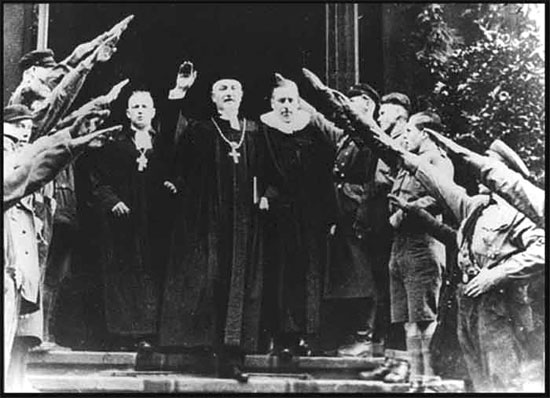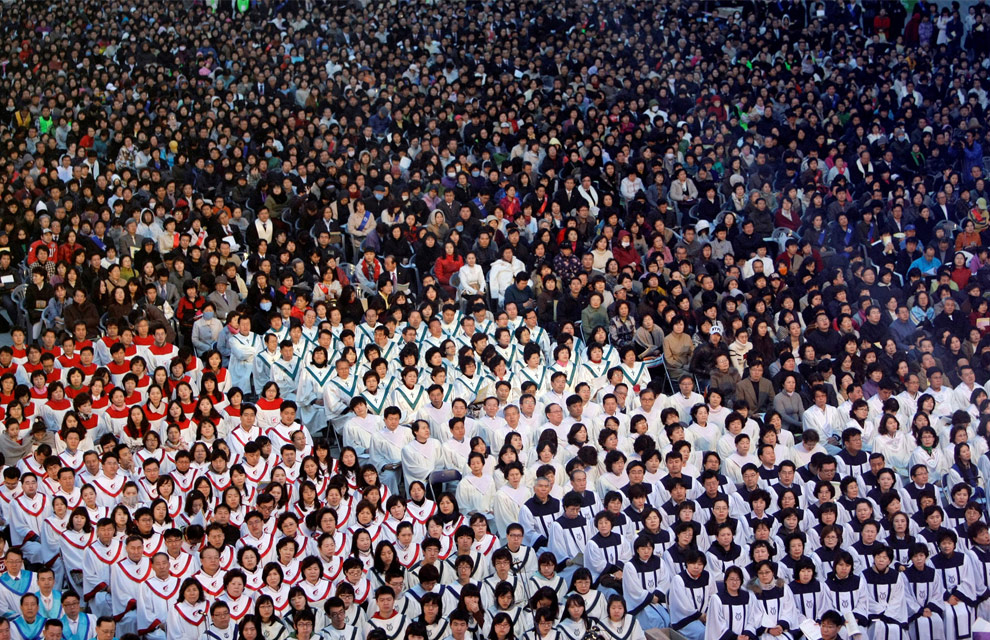A Review of Brian Stanley’s “Christianity in the Twentieth Century: A World History”
Exploring Church History in the Twentieth Century
Co-Missioners,
This week we bring you the first of what we hope will be a regular string of Thursday Theology book reviews. Today’s reviewer is Matthew Metevelis, a Luther Seminary graduate and ELCA pastor who directs a hospice program in Las Vegas, with service on the side at Reformation Lutheran Church, also in Las Vegas. Matt is a voracious reader and a vigorous confessor. We mean the latter in the Lutheran sense of one who, when put on the spot, will hold his head high (or hers, as the case may be) and let it be known that Christ and no other is the Lord we stake our lives on. You’ll find that confession booming through in Matt’s concluding paragraph. God grant your “Amen.”
Peace and Joy,
The Crossing Community
A Review of Brian Stanley’s Christianity in the Twentieth Century: A World History
(Princeton, N.J.: Princeton University Press, 2018)
By Matthew Metevelis
Institutions are always at the mercy of their narratives. The stories institutions recount about their opportunities, challenges, triumphs and defeats help them articulate their mission and temper the cultures in which they operate. This is true also of Christian institutions, be these congregations or entire denominations. Are we in the midst of a spirit filled revolution changing hearts and minds for Christ? Are we in the midst of cultural shifts beyond our control that demand our adaptation? Or do these same shifts require us to circle the wagons and double down on our identity? Are we in the last days? Anyone who has been to a meeting of a larger church body in recent years has no doubt been subjected either to dreary statistics or to some stirring call to action based on assumptions about the current vitality or decline of Christianity. The ways we make sense of our Christian story underlie and shape those countless and often competing voices that keep calling the church to action, change, transformation, and preservation.
Yet the past one hundred years of Christian history often gets scant attention in seminary curricula or in discussions about denominations as institutions. Most church history textbooks give meager space to the twentieth century. Details are given about ancient church definitions, reformation debates, and modern challenges – but there is little analysis of the actual events that have given rise to those challenges. Denominational thinking likewise is infected either with quixotic longing for lost golden ages or with magical thinking about how to create new spiritual utopias. Rarely are we open to the sobering examination of history that helps us weigh our assumptions and the hopes that spring from them.
Hence my pleasure in this encounter with Brian Stanley, professor of World Christianity at the University of Edinburgh. In Christianity in the Twentieth Century, Professor Stanley has produced a readable and compelling historical examination that tests our narratives against the messier canvas of facts and reality. Through sixteen chapters Stanley looks at commonly held assumptions about the church’s recent history of the church and provides interesting case studies by which to assess them. He does this as an accomplished and well published scholar whose expertise prompted Princeton University Press to commission this volume for a series entitled “The Princeton History of Christianity.” As one would expect of such a work, the book is global in scope and pointed in its analysis. This is not a simple chronicle of events or a catalogue of names. Instead Stanley writes a readable, detailed and eminently useful history concentrating on the experience of the church in the turbulent currents of the century just past.
 Stanley excels in puncturing myths. For example, popular historians consistently assume that the horrors of the First World War precipitated a decline in religion in Great Britain. Stanley demonstrates to the contrary that the experience of war and loss triggered a great outpouring of less than traditional religiosity. He also shows how it gave rise to broad phenomena like the rise of Anglo-Catholicism and the religious awakenings that took place throughout the British Empire after 1918. Or again, against the standard depiction of Christianity as an oppressive force in the hands of colonial oppressors, Stanley recounts the careers of three African converts from Protestant missions who took the theology and logic of Christianity to liberating extremes, well beyond the comfort of the institutions that had fostered them. Or yet again, examining the interrelationship between Christianity and nationalism, Stanley shows how Christianity actually flourished in repressed nations like Poland because of nationalism, and he demonstrates how the institutional church suffered more under the cultural indifference and neglect of post-war France than from the repression of the militantly atheistic Soviet regime in Russia. And to refute simplistic pictures of a secularizing north and a rising Christian “global South,” Stanley devotes an entire chapter to the impact of migrant churches and how these have changed the character of entire denominations.
Stanley excels in puncturing myths. For example, popular historians consistently assume that the horrors of the First World War precipitated a decline in religion in Great Britain. Stanley demonstrates to the contrary that the experience of war and loss triggered a great outpouring of less than traditional religiosity. He also shows how it gave rise to broad phenomena like the rise of Anglo-Catholicism and the religious awakenings that took place throughout the British Empire after 1918. Or again, against the standard depiction of Christianity as an oppressive force in the hands of colonial oppressors, Stanley recounts the careers of three African converts from Protestant missions who took the theology and logic of Christianity to liberating extremes, well beyond the comfort of the institutions that had fostered them. Or yet again, examining the interrelationship between Christianity and nationalism, Stanley shows how Christianity actually flourished in repressed nations like Poland because of nationalism, and he demonstrates how the institutional church suffered more under the cultural indifference and neglect of post-war France than from the repression of the militantly atheistic Soviet regime in Russia. And to refute simplistic pictures of a secularizing north and a rising Christian “global South,” Stanley devotes an entire chapter to the impact of migrant churches and how these have changed the character of entire denominations.
Stanley treats major events of the century like the complicated transformation of the Catholic Church’s attitude toward modernity up to and during Vatican II, the broadening of Protestant perspectives about the missionary enterprise, and cultural struggles over the ordination of women and prevailing conceptions about human rights and human sexuality. But Stanley peppers stories we thought we knew with interesting insights. Devoting an entire chapter to liberation theology, Stanley shows how indebted Catholic liberation theologians like Gustavo Gutierrez were to their South American Protestant contemporaries. While both critics and proponents continue to allege that the contours of liberation theology were shaped by traditional Marxist thought, Stanley argues that the liberation thinkers drew even more from the biblical theologies of God’s saving acts in history as articulated by G. Ernest Wright and Gerhard von Rad, and from theological attention to theories of “development.” Stanley then demonstrates how liberation theology was challenged to accommodate itself to different political struggles. In the Palestinian context it came to view the Exodus story with suspicion, and, for the promise of liberation, turned instead to the Book of Jonah with its affirmation of God’s love for all nations.
There is plenty in this book that undercuts our fondest assumptions and hopes. Stanley casts a pall on the myth of the twentieth century as the “ecumenical century.” To be sure, he acknowledges the great institutional strides made toward ecumenical cooperation and unity though massive structures like the World Council of Churches. But the view closer to the ground is more complicated. Many church unions led ultimately to greater disunion. Stanley cites a 1907 union of four Presbyterian missions in Korea that, by 2011, had fractured into 215 new denominations.
Stanley also forces the reader to contemplate the darker aspects of a gruesome century without letting the faith off the hook. “Contextual” theology which taught that the Christian message should be accommodated to different peoples and different times may have led to the ease with which many German Christians were able to justify complicity in brutal policies or to compartmentalize faith and politics at the expense of their neighbors. Likewise, the influence of the social gospel that led Catholic authorities in the very Christian nation of Rwanda to sympathize with the Hutus over the wealthier Tutsis may have blinded those authorities to another genocide on the horizon. Stanley is at his best when he allows history to teach in such instances. As he writes,
Ethnic conflicts usually turn on mutually contradictory perceptions of what is just, and a Christian political theology that simply appeals for justice is unlikely to attain adequate moral independence from competing rhetorical platforms … Christianity proclaims a gospel of redemption from sin, but what Christians find hardest of all is to recognize the extent to which evil can infect the company of the redeemed (170f.).
This sense of the pervasiveness of evil and sin is precisely the great lesson of history. All the stories we tell about ourselves or about the church are in one way or another debased with ideologies of glory. Whether it is a church bureaucrat who urges a bold new way to understand mission in the tea leaves of cultural change or some dire pseudo-prophetic voice urging a return to an idyllic past by retrenching dead ideologies – both these voices hold that the future of the church belongs in the hands of human beings and their works. Christians are constantly told to “be the church” as if the church consists in what Christians do rather than what Christ does for them. History for Christians, and for every other group, is not some glory-story of never-ending ascent. Neither is it an orphic tale of change and decline. History for the church as for the Christian is the continual encounter of God’s word with God’s people. Sometimes it is a tale of growth and revolution. At other times it is a story of hope and persistence. But whatever it is we can only hear these stories. We don’t get to direct them. As Luther put it “histories are nothing else than a demonstration, recollection, and sign of divine action and judgement, how He upholds, rules, obstructs, prospers, punishes, and honors the world, and especially people, each according to his just desert, evil or good.” History is out of our hands. And Brian Stanley has given the church a masterful demonstration and sign of the mess we sinners make of God’s gifts and the lessons God makes of our mess.
Thursday Theology: that the benefits of Christ be put to use
A publication of the Crossings Community
